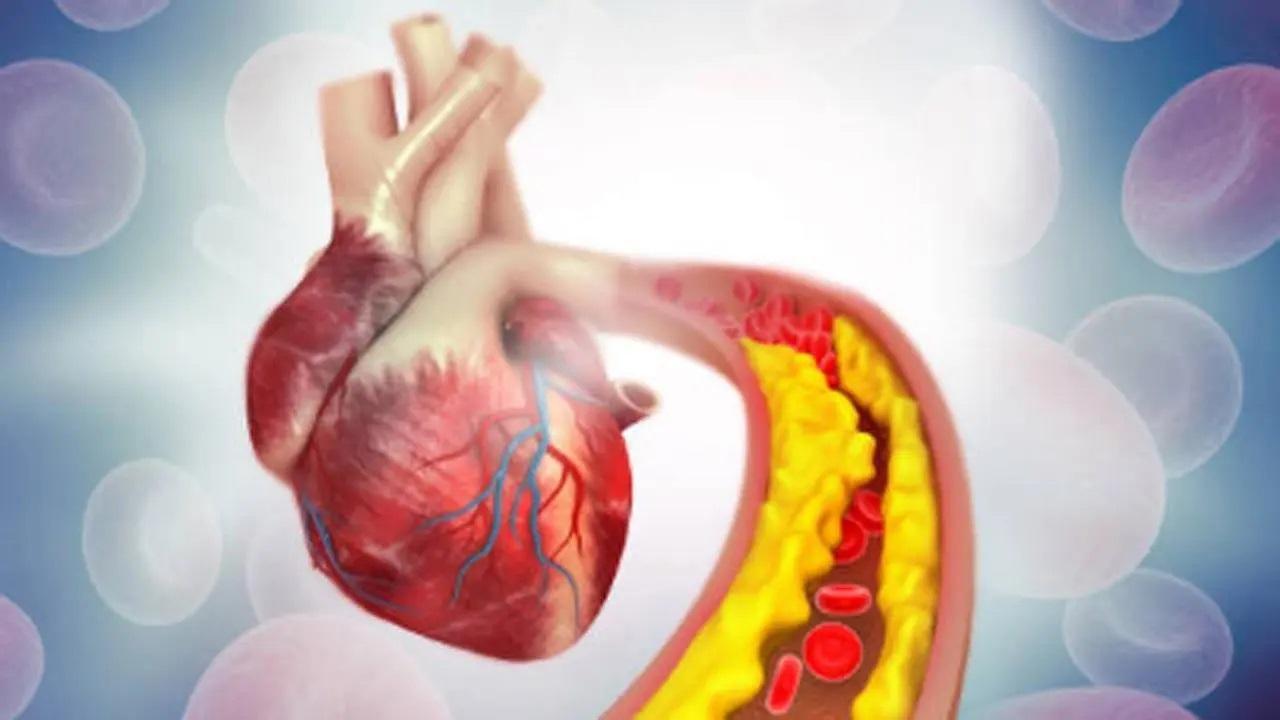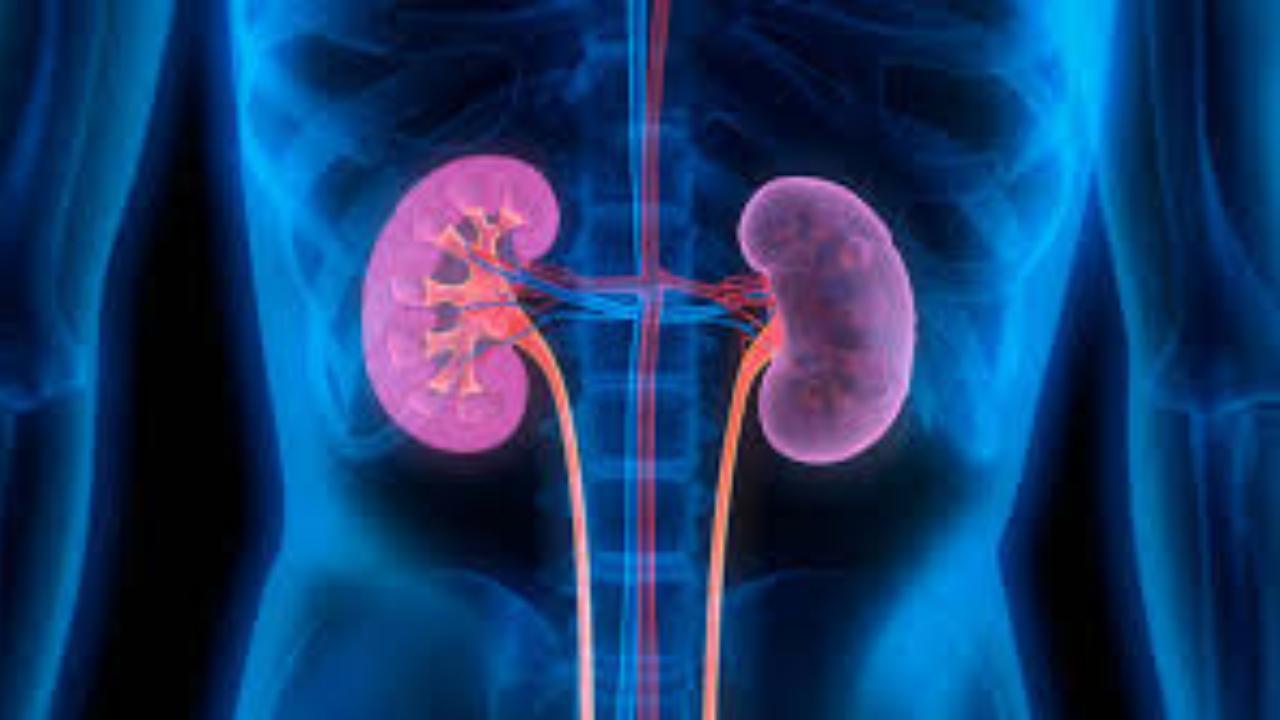Read Health And Fitness News
AI can identify patients at risk of serious arrhythmia, prevent sudden death
Artificial intelligence (AI) can help scientists identify patients at risk of a serious arrhythmia that is capable of triggering cardiac arrest and sudden death. As part of a new study to be published in European Heart Journal, a network of artificial neurons imitating the human brain was developed by researchers from Inserm, Paris Cite University and the Paris public hospitals group (AP-HP), in collaboration with their colleagues in the US. During the analysis of data from over 240 000 ambulatory electrocardiograms, this algorithm identified patients at risk of a serious arrhythmia that was capable of triggering cardiac arrest within the following 2 weeks in over 70 per cent of cases. Each year, sudden cardiac death is responsible for over 5 million deaths worldwide. AI could help to improve the anticipation of arrhythmias – unexplained heart rhythm disorders which, if severe, can cause fatal cardiac arrest – according to the new study. As part of this study, a network of artificial neurons was developed by a team of engineers from the company Cardiologs (Philips group) in collaboration with the universities of Paris Cite and Harvard. What this algorithm does is imitate the functions of the human brain in order to improve the prevention of cardiac sudden death. The researchers analysed several million hours of heartbeats thanks to data from 240 000 ambulatory electrocardiograms collected in six countries (USA, France, UK, South Africa, India and Czechia). Thanks to artificial intelligence, the researchers were able to identify new weak signals that herald the risk of arrhythmia. They were particularly interested in the time needed to electrically stimulate and relax the heart ventricles during a complete cycle of cardiac contraction and relaxation. "By analysing their electrical signal for 24 hours, we realised that we could identify the subjects susceptible of developing a serious heart arrhythmia within the next two weeks. If left untreated, this type of arrhythmia can progress towards a fatal cardiac arrest", explained Dr Laurent Fiorina, researcher at the Paris Cardiovascular Research Centre (PARCC) (Inserm/Paris Cite University). While the artificial neural network is still in the evaluation phase, it showed itself in this study to be capable of detecting at-risk patients in 70 per cent of cases, and no-risk patients in 99.9 per cent of cases. In the future, this algorithm could be used to monitor at-risk patients in hospital. If its performances are refined, it could also be used in devices such as ambulatory Holters that measure blood pressure to reveal hypertension risks. It could even be used in smartwatches. The researchers now aim to conduct prospective clinical studies to test the efficacy of this model under real-world conditions. This story has been sourced from a third party syndicated feed, agencies. Mid-day accepts no responsibility or liability for its dependability, trustworthiness, reliability and data of the text. Mid-day management/mid-day.com reserves the sole right to alter, delete or remove (without notice) the content in its absolute discretion for any reason whatsoever.
30 March,2025 01:30 PM IST | London | IANSStudy decodes who actually needs statin medication to lower cholesterol
A new study in the US aims to determine the best method to screen and evaluate patients who are at risk of developing coronary heart disease and which patients would benefit from taking a statin medication to lower cholesterol. A new approach by researchers at Intermountain Health in Salt Lake City to determining risk and selecting a statin is the use of the coronary artery calcium (CAC) score which is determined by taking a low-radiation dose image of the heart using computed tomography (CT) to look for calcium deposits in plaques in the heart’s coronary arteries. “Our study is now fully enrolled with over 5,600 patients, and in this abstract for the American College of Cardiology, we wanted to look at baseline characteristics and differences in statin prescribing recommendations,” said Jeffrey L. Anderson MD, principal investigator of the study and distinguished clinical and cardiovascular research physician at Intermountain Health. “The question is: Can we do a better job in selecting people who need a statin for primary coronary risk reduction by using the coronary artery calcium score, rather than just putting coronary risk factors into an equation – that is, is it more effective to use direct imaging evidence of plaque burden or a risk probability. That’s what we’re aiming to find out,” he said. The new study was presented at the American College of Cardiology’s Annual Scientific Sessions meeting in Chicago on Saturday. The results of scoring by their assigned risk assessment tool were sent in letters to their personal physicians, including whether a statin was recommended based on a high-risk score. Patients in the two groups in the study were found to have very similar baseline characteristics. However, researchers found that the rate of statin medication recommendations were different. The study is expected to conclude in early 2026, at which time a comparison of outcomes, including deaths, heart attacks, strokes, and revascularisations during up to 7 years, and an average of over four years, of follow-up will be made. This is especially important considering that statins entail costs and can have side effects, including muscle aches and an increased risk of diabetes. This story has been sourced from a third party syndicated feed, agencies. Mid-day accepts no responsibility or liability for its dependability, trustworthiness, reliability and data of the text. Mid-day management/mid-day.com reserves the sole right to alter, delete or remove (without notice) the content in its absolute discretion for any reason whatsoever.
30 March,2025 01:14 PM IST | New York | IANSHigh sodium key risk factor for obesity: Study
While sugary foods and beverages are more blamed for the global rise in obesity rates, a new study suggests that sodium -- found in chips, processed meat products, bread, and dairy products, especially cheese -- may also be a significant risk factor. The research presented at the European Congress on Obesity (ECO 2025) highlighted an alarming correlation between sodium intake and obesity, both in terms of overall body fat and abdominal fat. The study, led by researchers from the Finnish Institute for Health and Welfare in Finland analysed data from over 5,000 men and women aged 18 and older, examining their sodium intake as well as urine sodium concentration about their obesity status. Notably, all participants were found to exceed the recommended sodium intake of 5 grams or less per day -- set by the World Health Organization. The analysis revealed strong correlations between high dietary sodium intake and both general and abdominal obesity, particularly for women. Both high sodium and obesity levels are known risk factors for hypertension, cardiovascular diseases, diabetes and cancers. Participants in the highest sodium intake quartile were 4.3 times more likely to be classified as obese overall and 3.4 times more likely to suffer from abdominal obesity. In the case of men, those in the highest quartile of urine sodium concentration were six times more likely to experience general obesity and 4.7 times more likely to have abdominal obesity. "In general, men consume more food, and also more foods that are the main food sources of sodium in the diet, such as meat products, bread and bakery products, and cheese. Our analyses were adjusted for total energy intake and therefore the stronger associations in men might be due to the higher salt intake relative to total energy intake. However, regardless of the magnitude of the relationship, the associations were in a similar direction in both men and women," said Annika Santalahti, from the Finnish Institute. "These results strengthen the evidence of an association between sodium intake and obesity, with similar findings observed for both dietary sodium and urine sodium concentration. It is important to gain more understanding about the biological mechanism of the relationship," she added. This story has been sourced from a third party syndicated feed, agencies. Mid-day accepts no responsibility or liability for its dependability, trustworthiness, reliability and data of the text. Mid-day management/mid-day.com reserves the sole right to alter, delete or remove (without notice) the content in its absolute discretion for any reason whatsoever
28 March,2025 03:56 PM IST | Mumbai | IANSHigh BP can affect kidney function even before symptoms appear, finds study
Hypertension or high blood pressure can have a significant impact on kidney function, much before clinical symptoms begin to appear, according to a study that stressed the importance of early detection. The research, led by a team from the Medical University of Vienna in Austria, found that high blood pressure can lead to abnormalities in the podocytes -- specialised cells in the renal filter -- even without other pre-existing conditions such as diabetes. "Early detection and treatment could help to slow the progression of kidney disease and prevent long-term damage," said the researchers Rainer Oberbauer and Heinz Regele from the varsity. For the study, published in the journal "Hypertension", the team analysed kidney tissue from a total of 99 patients: who either suffered from high blood pressure (arterial hypertension) and type 2 diabetes or did not have either of the two conditions. High BP and diabetes are the most common causes of chronic kidney disease. The study was conducted on unaffected renal tissue samples from tumour nephrectomies -- a surgical procedure in which a kidney is removed in whole or in part to treat a kidney tumour. Using modern imaging and computer-assisted methods, the size and density of the podocytes and the volume of the renal corpuscles (glomeruli) were determined in the tissue samples. Podocytes are specialised cells of the renal corpuscles (glomeruli) that play a crucial role in the filtering function of the kidney. Their size and density are important indicators of the health of the kidney tissue. Artificial intelligence in the form of deep-learning-based image analysis was used for the analysis. With the help of a specially trained algorithm, digital tissue sections were automatically analysed to precisely capture the structure of podocytes and glomeruli. "The results show that patients with hypertension have a reduced density of podocytes compared to healthy controls and that their cell nuclei are enlarged compared to those of healthy controls," said first author Christopher Paschen. These changes occurred independently of the additional diagnosis of type 2 diabetes and likely represent the first microscopically visible step towards impaired renal function. This indicates that high blood pressure can cause structural damage to the kidneys at an early stage and before clinical symptoms appear, the researchers explained. This story has been sourced from a third party syndicated feed, agencies. Mid-day accepts no responsibility or liability for its dependability, trustworthiness, reliability and data of the text. Mid-day management/mid-day.com reserves the sole right to alter, delete or remove (without notice) the content in its absolute discretion for any reason whatsoever
28 March,2025 03:11 PM IST | Mumbai | IANSWorld Heart Federation marks Mar 27 as World Adherence Day with 14 institutions
Millions of lives—and billions in healthcare costs—are at stake due to one critical but often ignored issue: failure to follow treatment plans. The World Heart Federation (WHF) warns that non-adherence to medication, lifestyle recommendations, and overall healthcare plans is fuelling preventable hospitalisations, worsening health outcomes, and straining healthcare budgets worldwide. To address this crisis, WHF has partnered with leading institutions to mark March 27 as World Adherence Day—a global call to action to ensure patients stay on track with life-saving medicines and healthier lifestyles. Across the globe, adherence rates to medical treatments and lifestyle changes are dangerously low. In high-income countries, it is estimated that more than 50 per cent of patients with chronic conditions do not follow their prescribed treatments; adherence rates are even lower in lower-income nations. “This is a defining moment and raising awareness is the first step in closing these critical gaps in healthcare,” says professor Jagat Narula, president of the World Heart Federation. “The reasons for non-adherence are complex—from stigma and communication barriers to financial constraints—and we must act now.” The stakes couldn’t be higher. Non-adherence to therapies has a great impact on population health, causing around 200,000 deaths in Europe every year. In fact, research shows that increasing adherence rates to 70 per cent could save more than €330 million over 10 years in the European Union. One study in China found that good adherence after heart attack was associated with a 39 per cent reduction in cardiovascular events; a study in the US found that patients adhering to treatment experienced a lower rate of cardiovascular events, reduced by 20 per cent. Meanwhile healthcare costs are skyrocketing. In the US, non-adherence to medication and healthcare plans in chronic disease patients led to annual per-person costs of up to USD 52,341 in a single year, driven by increased hospitalizations, emergency visits, and outpatient care. For healthcare professionals and caregivers, ensuring patients stick to their treatment plans— including medications, diet, exercise, and regular check-ups—is an uphill task. Limited time, resources, and follow-up mechanisms make it difficult to track adherence—leaving patients vulnerable to life-threatening consequences. The WHF, in alliance with 14 global partners, is calling on patients, caregivers, the pharmaceutical industry, and the medical community to unite in breaking down barriers to adherence. “Treatment doesn’t stop at the doctor’s office,” says Narula, “with World Adherence Day, we intend to ignite a global dialogue and invoke a movement to make adherence—whether to medications, healthier living, or follow-up care—a healthcare priority that deserves a universal commitment.”
27 March,2025 11:11 AM IST | Geneva | mid-day online correspondentRepetitive behaviours indicative of autism diagnosis rather than social skills
People with autism are typically diagnosed by clinical observation and assessment. To deconstruct the clinical decision process, which is often subjective and difficult to describe, researchers used a large language model (LLM) to synthesise the behaviours and observations that are most indicative of an autism diagnosis. Their results show that repetitive behaviours, special interests, and perception-based behaviours are most associated with an autism diagnosis. These findings have the potential to improve diagnostic guidelines for autism by decreasing the focus on social factors- which the established guidelines in the DSM-5 focus on but the model did not classify among the most relevant in diagnosing autism. "Our goal was not to suggest that we could replace clinicians with AI tools for diagnosis," says senior author Danilo Bzdok of the Mila Quebec Artificial Intelligence Institute and McGill University in Montreal. "Rather, we sought to quantitatively define exactly what aspects of observed behaviour or patient history a clinician uses to reach a final diagnostic determination. In doing so, we hope to empower clinicians to work with diagnostic instruments that are more in line with their empirical realities." The scientists leveraged a transformer language model, which was pre-trained on about 489 million unique sentences. They then fine-tuned the LLM to predict the diagnostic outcome from a collection of more than 4,000 reports written by clinicians working with patients considered for autism diagnosis. The reports, which were often used by multiple clinicians, included accounts of observed behaviour and relevant patient history but did not include a suggested diagnostic outcome. The team developed a bespoke LLM module that pinpointed specific sentences in the reports that were most relevant to a correct diagnosis prediction. They then extracted the numerical representation of these highly autism-relevant sentences and compared them directly with the established diagnostic criteria enumerated in the DSM-5. The researchers were surprised by how clearly the LLM was able to distinguish between the most diagnostically relevant criteria. For example, their framework flagged that repetitive behaviours, special interests, and perception-based behaviour were the criteria most relevant to autism. While these criteria are used in clinical settings, current criteria focus more on deficits in social interplay and lack of communication skills. The team expects their framework will be helpful to researchers and medical professionals working with a range of psychiatric, mental health, and neurodevelopmental disorders in which clinical judgement forms the bulk of the diagnostic decision-making process. This story has been sourced from a third party syndicated feed, agencies. Mid-day accepts no responsibility or liability for its dependability, trustworthiness, reliability and data of the text. Mid-day management/mid-day.com reserves the sole right to alter, delete or remove (without notice) the content in its absolute discretion for any reason whatsoever.
27 March,2025 10:54 AM IST | Washington DC (USA) | mid-day online correspondentAIIMS to launch human trials on indigenous MRI machine system in October
The All India Institute of Medical Sciences (AIIMS), Delhi is expected to run human trials on India's first indigenously developed MRI machine system in October. The indigenous 1.5 Tesla MRI system for medical imaging will be built at the Indigenous Magnetic Resonance Imaging (IMRI) -- a national mission, sponsored by the Ministry of Electronics and Information Technology (Meity) and being implemented at the Society for Applied Microwave Electronics Engineering & Research (SAMEER), an autonomous government institution under Meity. C-DAC (Trivandrum), C-DAC (Kolkata), IUAC (New Delhi), and DSI-MIRC (Bangalore) will work as collaborating agencies to design and develop the MRI system. Meity informed that "animal trials have been concluded". In addition, “the subsystems development and testing of RF Power Amplifier, High power T/R switch, RF spectrometer, RF Coils, Rx. Front ends, control unit, couch, and IMRI software have been completed and integrated with the procured magnet, gradient coil, and gradient amplifier," it added. “India takes a big leap in developing frugal and indigenous health solutions including medical devices to not just meet domestic demand but also to serve the next billion,” said Sunita Verma, Group Coordinator R&D, MeitY. The MRI machine is part of the Memorandum of Understanding (MoU) between SAMEER, and AIIMS. Under the MoU, both institutions will work collaboratively to develop high-field/low field Magnetic Resonance Imaging (MRI)/ Nuclear Magnetic Resonance (NMR) systems and promote research in radio frequency (RF), microwave systems, and allied areas for medical applications. The MOU encompasses five key areas: collaborative research in medical devices development; clinical validation of indigenous 1.5 T MRI system developed by SAMEER, Mumbai; collaborative research in AI/ML for image enhancement and accelerated imaging; design and development of subsystems of high/low field MRI scanner; and development of RF subsystems for high field animal MRI scanners. “It is important to showcase the country’s capabilities, and clinicians must work closely with scientists to develop more and better medical devices,” said Dr M. Srinivas, Director, AIIMS, New Delhi. This story has been sourced from a third party syndicated feed, agencies. Mid-day accepts no responsibility or liability for its dependability, trustworthiness, reliability and data of the text. Mid-day management/mid-day.com reserves the sole right to alter, delete or remove (without notice) the content in its absolute discretion for any reason whatsoever.
26 March,2025 11:47 AM IST | New Delhi | IANSIncreased screen time driving near-sightedness in children, adults: Study
Overuse of digital devices and the resulting increased screen time is driving a significant number of people, especially the young towards near-sightedness or myopia, warned experts on Monday. Health experts have long been raising concerns over the world moving towards an explosive myopic crisis, especially post the Covid-19 pandemic, when traditional schools shifted to online learning through tablets and laptops; and outdoor activities were almost eliminated. “Digital eye strain is becoming a significant concern, especially among children post Covid. When children focus on screens for long periods, the eye muscles remain contracted. Over time, this prolonged strain contributes to the development of myopia (near-sightedness), particularly in young, pliable eyes,” said Dr. Anuj Mehta, Professor, and HOD, Ophthalmology, VMMC and Safdarjung Hospital at the ‘Illness To Wellness’ Summit organised by ASSOCHAM. Dr. Kirti Singh, Director Professor, Guru Nanak Eye Centre, Maulana Azad Medical College, New Delhi said that the constant focus on screens decreases the rate of eye blinking, leading to dry eyes. “This issue is even more pronounced in cramped spaces with poor ventilation, excessive air conditioning, or exposure to smoke - conditions often seen in ‘sick building syndrome,” Singh. According to ophthalmologist Dr. (Prof.) A. K. Grover, from a city-based hospital, reduced or ineffective blinking leads to ocular surface issues such as dryness, burning, and eye fatigue. "Prolonged screen time strains our ability to shift focus between near and distant objects causing focusing difficulties. It can also lead to poor posture which contributes to neck and head strain, adding to overall discomfort,” Grover noted. Singh added that the impact of digital strain isn’t limited to just the eyes. “Our body functions as a connected system -- eye health is linked to liver and heart health and kidney,” she said. The experts agree that eliminating digital devices from children’s lives is unrealistic. However, steps can be taken to minimize its impact of causing digital eye strain. They emphasised the importance of balance, encouraging more outdoor activities to strengthen long-distance vision. They suggested the 20-20-20 rule which is after 20 minutes of screen time, take a 20-second break by looking at an object 20 feet away and aim for at least 2 hours of outdoor activity daily as well. This story has been sourced from a third party syndicated feed, agencies. Mid-day accepts no responsibility or liability for its dependability, trustworthiness, reliability and data of the text. Mid-day management/mid-day.com reserves the sole right to alter, delete or remove (without notice) the content in its absolute discretion for any reason whatsoever
25 March,2025 10:43 AM IST | Mumbai | IANSFacing high cholesterol? Your office coffee brewing machine may be a cause
Love to sip that freshly brewed coffee at work? Beware, your coffee brewing machine at the office may raise your cholesterol levels, claims a study. The study led by researchers from the Uppsala University and Chalmers University of Technology in Sweden found that automated coffee brewing machines in the workplace contain natural chemicals, known as diterpenes -- known to increase cholesterols. Elevated cholesterol levels are an established risk factor for cardiovascular diseases. In the paper, published in the journal Nutrition, Metabolism and Cardiovascular Diseases, the team found significantly higher levels of cafestol and kahweol in coffee examined from 14 machines in Swedish healthcare facilities. Cafestol and kahweol are coffee-specific diterpenes -- known for their potential to increase cholesterol levels. The diterpene concentrations in coffee from brewing machines considerably exceeded paper-filtered coffee. It is because paper filters typically trap these compounds, but metal filters found in many coffee machines allow them to pass into your cup. The researchers examined brewing machines -- which produce coffee in 10-30 seconds by passing hot water through ground beans and a metal filter; liquid-model machines -- which mix liquid coffee concentrate with hot water; and instant machines. While the brewing machines showed the highest diterpene levels, the liquid-model machines generally contained much lower levels comparable to paper-filtered coffee. For espresso, there was a considerable and unexplained variation in diterpene concentration between the four samples tested. This needs further study but may be of importance for regular espresso consumers, said the team. “Based on the concentrations of cafestol and kahweol in investigated machine coffees, thoroughly filtered coffee seems like the preferable choice for cardiovascular health. Accordingly, filtered coffee should be preferred, also in workplace settings,” said the researchers. “Intake of insufficiently filtered coffee during working hours could be an overlooked factor for cardiovascular health due to its effect on plasma cholesterol concentrations,” they added. The researchers also acknowledged major limitations such as its small sample size and lack of details regarding the designs of each coffee machine. The team also called for establishing the link with more studies. This story has been sourced from a third party syndicated feed, agencies. Mid-day accepts no responsibility or liability for its dependability, trustworthiness, reliability and data of the text. Mid-day management/mid-day.com reserves the sole right to alter, delete or remove (without notice) the content in its absolute discretion for any reason whatsoever
24 March,2025 03:03 PM IST | Mumbai | IANSType 2 diabetes linked with some obesity-related cancers: Study
A new diagnosis of type 2 diabetes (T2D) has been linked to a subsequent increase in the risk of developing some, but not all, obesity related cancers, according to new research. Previous research has described associations between type 2 diabetes mellitus and higher risk of several obesity-related cancers. However, it remains unclear whether these associations are causal, due to confounding (their mutual risk factor of obesity); immortal time bias (many studies combine prevalent and new-onset T2D); or time detection bias (for example, the co-diagnosis of two relatively common conditions at the same time). In this study, to be presented at European Congress on Obesity (ECO 2025, Malaga, Spain, 11-14 May), the authors aimed to address these previous methodological flaws. They performed a matched cohort control study within UK Biobank of new-onset T2D (defined by date of first reported non-insulin dependent diabetes) versus unexposed individuals matched (1 participant to 3 controls) on body mass index (BMI), age, and sex. A total of 23,750 participants with T2D were matched with 71,123 controls. Over a median follow-up time of 5 years, there were 2431 new primary cancers among T2D participants and 5184 new primary cancers among matched controls. The data analysis showed new-onset T2D was associated with a 48 per cent increased risk of obesity related cancers in men and a 24 per cent increased risk in women – an effect independent of BMI. However, there were no associations with several site-specific ORCs – notably, endometrial, and post-menopausal breast cancer in women There were positive associations found – new onset T2D increased the risk for bowel cancer by 27 per cent in men and 34 per cent in women; for pancreatic cancer by 74 per cent in men and a near-doubling of risk in women. For liver cancer new onset T2D was associated with a near-quadrupling of risk in men and near 5-fold increased risk in women. “At this stage, we are unsure whether these differences in men and women are due to a sex-dependent biological pathway such as hormone levels, insulin sensitivity, body fat composition, or due to a simple difference in the number of cancers found in men and women within UK Biobank by chance,” said the study authors. This story has been sourced from a third party syndicated feed, agencies. Mid-day accepts no responsibility or liability for its dependability, trustworthiness, reliability and data of the text. Mid-day management/mid-day.com reserves the sole right to alter, delete or remove (without notice) the content in its absolute discretion for any reason whatsoever
24 March,2025 11:28 AM IST | Mumbai | IANSChildhood obesity linked to increased risk of COPD later: Study
Children overweight or obese may be at an increased risk of chronic obstructive pulmonary disease (COPD) in adulthood, according to a study. COPD is a progressive lung disease that makes it hard to breathe and worsens over time. While smoking is a major risk factor for COPD, other risk factors like environmental, occupational, and even early life factors are increasingly being recognised. The study led by researchers from Copenhagen University in Denmark focuses on examining the link between a high body mass index (BMI) in childhood and COPD. The team found that compared to women with an average childhood BMI, risks of chronic COPD were 10 per cent higher for those who had an above-average BMI trajectory. For women with an overweight trajectory, the risk was 26 per cent higher and for those with an obesity BMI trajectory the risk was 65 per cent higher. Similarly, compared to men with an average childhood BMI, the risks of COPD were 7 per cent higher for those with an above-average trajectory. For men with an overweight trajectory, the risk was 16 per cent higher and those with an obesity trajectory the risk was 40 per cent higher. In contrast, a lower risk of future COPD was observed only for women with a below-average childhood BMI trajectory -- 9 per cent lower compared to women with an average childhood BMI trajectory. “Having a BMI trajectory above average in childhood may increase the risk of subsequent COPD. Thus, our results suggest that being overweight during this early period of life is an indicator of risk for the development of COPD,” said Frida Richter, from the Center for Clinical Research and Prevention, at the varsity. The study included data from 276,747 Danish children (137,493 girls) born from 1930-1982, who had between 2 and 12 weight and height measurements between ages 6-15 years. They were then examined for a diagnosis of COPD from age 40 years onwards. The research will be presented at this year’s European Congress on Obesity (ECO 2025) to be held in Malaga, Spain in May. This story has been sourced from a third party syndicated feed, agencies. Mid-day accepts no responsibility or liability for its dependability, trustworthiness, reliability and data of the text. Mid-day management/mid-day.com reserves the sole right to alter, delete or remove (without notice) the content in its absolute discretion for any reason whatsoever
22 March,2025 12:27 PM IST | Mumbai | IANS













